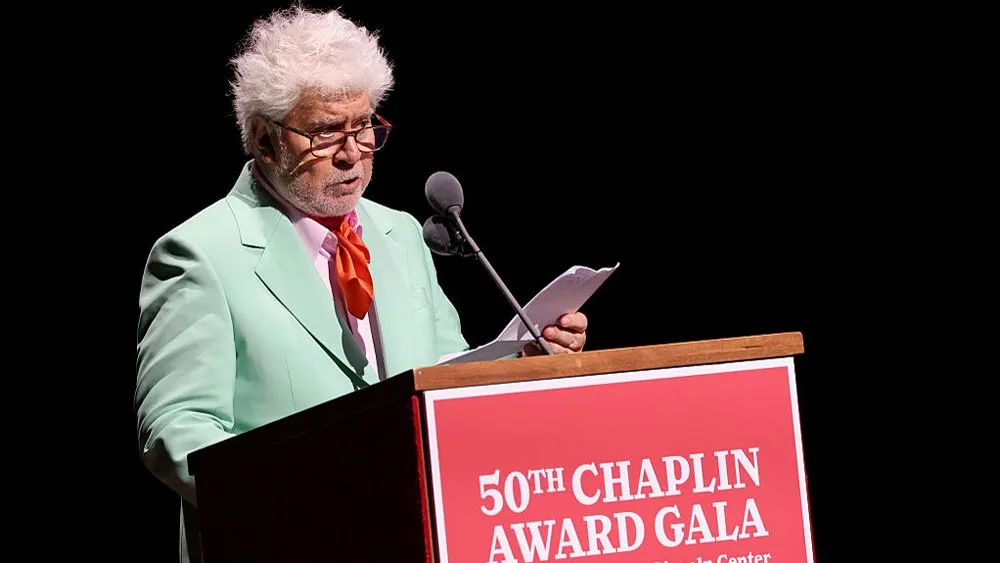April 22, 2009
Saigon, Vietnam :: Then and Now...
Megan Smith READ TIME: 25 MIN.
With an economic crisis lingering like a tequila hangover, travel is more of a budget-conscious endeavor than ever before. For those accustomed to 5-star luxury, but no longer able to afford it on the Euro exchange rate, let EDGE introduce you to one of the best kept secrets in Southeast Asia - Vietnam. In the first of two articles on this emerging destination, I get the inside scoop on tailor-made suits, motorbike traffic and snake wine in the ever eclectic and chaotic city of Saigon.
Now, I have been to New York City and I have been to London. I have lived in Seoul and Los Angeles, but let me tell you those metropoli are a preschooler's playdate compared to Saigon. This is a city well beyond hustle and bustle. Motorbikes dive and dart through streets and narrow alleyways with complete abandon; beggars hound tourists relentlessly; storefronts pile up upon storefronts and then give way to streetside vendors and open-air markets. And amid it all, a history better than any drama film. This is a city that has seen French imperialism, Civil War, American invasions and somehow emerged as the sleeping beauty of Southeast Asia. In short, Saigon, like the rest of Vietnam, must be seen to be believed.
Staying Saigon
A Hotel with History
The Caravelle Hotel's 50 years have mirrored Vietnam's. The hotel has been bombed and rebuilt, run-down and renovated. It has been the vantage point for American war correspondents and the drinking place of choice for Russian comrades. It has hosted Bob Hope, Richard Nixon, George H.W. Bush and Bill Clinton, and through it all it has been a symbol of Vietnam's tumultuous modern history.
Opened on Christmas Eve in 1959 with all hell about to break loose, the Caravelle was soon thrust onto the frontlines. Almost five years after it opened, in August of 1964, a bomb was exploded in one of the hotel's rooms. Later that year, on Christmas Day, a bomb went off across the street killing two Americans and injuring more than a hundred people. The bomb also knocked out the front windows of the Caravelle, and Bob Hope walked into the hotel on broken glass for his Christmas show.
A few more years on, the war raged ever hotter as the Tet Offensive gave ground to the North Vietnamese and put America on the defensive. In Saigon, the Caravelle's rooftop Saigon Saigon Bar became the place to be, and hundreds of journalists and other war spectators would come dressed to the nines to drink brandy, smoke cigars and watch the air raids that were the tragic signature of a period that still looms large in modern memory.
50 Years On
It was a war that forever changed not just Vietnam, not just America, but the whole of modern society and Saigon Saigon was the crow's nest. Reporting on the war and making history as they did, the American correspondents of Caravelle documented the wild clashes on the horizon, fueled the protests that defined a generation and wrote history as they saw it unfold.
With the fall of Saigon, the Americans fled in 1975, but that was not the end of the Caravelle's preeminence in Saigon lodging. The hotel hosted Russians rather than Americans as the Vietnam War gave way to the Cold War and two decades of steady decline. The decline ended with the doi moi, or economic reform, of the 90s, when Vietnam opened up economically to the outside world. Once again the Caravelle became a symbol of Vietnam's evolution, building a 25-story tower, then the tallest building in the city.
Throughout May, Caravelle will celebrate its 50 years at the center of Vietnam's history with 50% off rooms. In addition, on May 8, the Caravelle will hold a cocktail celebration in the hotel ballroom with speeches by renowned war journalists Peter Arnett and Robert Wiener, both of whom frequented the hotel in the 1960s, and throughout that week, the hotel's flagship restaurant, Reflections, will feature a "Champs-Elysees" French menu.
For more information on the 50h anniversary celebrations click here.
The Caravelle Today
With the opening of Vietnam, Saigon has exploded into a chaotic tangle that can overwhelm even the most seasoned of travelers. While that madness is part of the Saigon experience, travelers will appreciate the chance for a welcome respite from the manic streets of Saigon. The resplendent Caravelle Hotel, at the center of Saigon's trendy Dong Khoi district (Louis Vuitton's boutique resides just around the corner), is the perfect refuge.
Following the hotel's renovations in the late 90s, the Caravelle has maintained its place as one of the top five-star sleeps in Saigon. The staff, many in traditional dress, display the extraordinary service that is a trademark of Southeast Asian hospitality. The hotel concierge and front desk take care of any need, from city information to travel arrangements to in-room services. The staff's English is particularly commendable and a huge asset for hotel guests struggling with language barriers when booking tours or transport.
The hotel has an old wing with more traditional rooms, much as they were back in the day and a newer wing, located in the hotel's high-rise. Rooms in either section are simply fabulous, with the option of suites, deluxe rooms or signature floor rooms - the older wing allows those who want to eat, drink and sleep in the exact spaces so many war correspondents and celebrities did, while the towering new wing affords splendid city views. During my time at Caravelle I stayed in the newer wing in a 19th floor room perched peacefully above the city. The spacious room with a king-size bed also had a sofa near the wide bay window, and I passed more than a few hours just reveling in the view, the streets a cyclone of motion whose noise died to a whisper just outside my window.
Hotel Eats and Drinks
Saigon Saigon Bar
The Caravelle Hotel is more than just rooms - the hotel has a spa, two restaurants and its signature bar, Saigon Saigon. As a journalist, it was an amazing experience to sit in Saigon Saigon and imagine what the great war reporters must have seen from the same location. Today, the bar has been carefully renovated and refurbished to ensure it carries the hotel's storied past in its current milieu.
Though the city has a few more high-rises since the days of well-heeled war-time patrons, Saigon Saigon Bar, on the rooftop of the hotel's old wing, is still one of the best watering holes with a view. In addition to the view, the high-brow pub fate, cocktail concotions, live music and expat vibe provide reason to visit. In a city of beer drinkers, the cocktails are some of the best, and foreigners flock here nightly to sip, mingle and unwind to some great lounge music.
Restaurant 19 & Reflections
Restaurant 19 and Reflections are The Caravelle Hotel's two fine dining establishments. Reflections is the more expensive of the two, serving delectable French fare, while Restaurant 19 is a buffet-style mix of Vietnamese and Western foods. Restaurant 19 is unbeatable as a start to the day. The spread of food is unrivaled, with breakfast omelettes, French Toast, waffles, breads, pastries, fresh fruit, cheese and meats all on offer as well as the best steaming bowl of pho bo I had in Vietnam (more on just what pho bo is in the Taste Vietnam section!).
Qi Spa
If pho bo and Vietnamese coffee are the kickstart to touring Saigon, Qi Spa is the antidote to wind down even the tightest muscles. Spas and massage parlors abound, and no sooner will a Western visitor wander out the doors of Caravelle then they will be given a handful of pamphlets on local "spa" deals. While Qi Spa is more expensive than these street deals, the quality is guaranteed, something that is most definitely not true of the deals on the street. Qi Spa is a luxury experience from start to finish and great value for money for the American traveler, who can get an hour massage for around $60 and an hour foot massage for under $30. For couples, the Honeymoon Package is four hours of pampered bliss for two people and an absolute steal at $232.
Having arrived in Saigon after an overnight flight from Sydney, Australia and a very long weekend partying at Mardi Gras, I made taking advantage of Qi Spa's deals my first priority. While a massage may seem like a great idea for recovering from jetlag, in hindsight, I wouldn't recommend it. About a half hour into my 90-minute session, I was sound asleep on the table. Unfortunately, for my very accommodating and polite masseuse, this massage faux pas was made worse by the fact that I have always been a horrific snorer, something I undoubtedly did with the abandon of the exhausted on her table. I was woken at the end of the session, however, in the most polite manner and informed the massage was over. Though I had slept through most of it, my body had never felt more relaxed, and I had a newfound respect for the staff who handled the entire situation without cracking so much as a smile, something I certainly could not have managed had the roles been reversed.
Shopping Saigon
Tailored to Your Needs
There are a number of good reasons to visit Vietnam and its largest city of Saigon/Ho Chi Minh City. However, none are as good as the shopping. After a week in Saigon, the bargains bulging out of my suitcase were well worth the airfare. In a week, I had acquired custom-tailored silk-lined suits, commissioned paintings, silk ties and scarves to give my loved ones and a whole lot more.
An absolute must in Saigon is a visit to one of the city's many tailors. Vietnam is renowned for their silk wares and in Saigon there are plenty of expert hands to measure, cut and stitch the prize fabric into some stunning pieces. I priced a dozen different tailors and had clothing made at two, and can not recommend highly enough the second of the two tailors I worked with.
The women at Nam Silk are phenomenal seamstresses who have been at it for over a decade. I stopped in their shop because I liked the display suits, and I wound up buying two custom-made suits as well as a dozen silk scarves and ties as presents, which have since won rave reviews from everyone who received one. After I chose my fabric, the women measured me for a suit, all three staff giving me their undivided attention. They were thorough, asking questions about how I preferred the fit, the length and the lay of the fabric. I walked out confident and when I returned two days later to try on the suit, it was the single best fitting piece of clothing I have ever worn. My only regret was that I found them so late in my time in Saigon, and wasn't able to place an even larger order.
A Cut Above
Nam Silk is located in the backpacker district of Pham Ngu Lau, near the intersection of Bui Vien and Pham Ngu Lau. Designer/tailor options abound throughout Saigon, with Pham Ngu Lau and Dong Khoi typically those with the best English, as they primarily serve tourists. Dong Khoi tends to be the more expensive area with tailors increasingly moving into fashion design.
Whichever tailor you choose, they should be attentive when taking your measurements. I learned this the hard way, after the first tailor I went to in Dong Khoi "eyeballed" the measurements, spending most of the time chatting in Vietnamese to another worker. The result was a clownsuit that I was practically swimming in and that required three alterations to be wearable, but still does not have the look of an outfit custom-made for my body.
When you do find a good tailor, as I did with Nam Silk, tell them that you would like to use them again in the future. Not only will they view you as a "good customer" and give you a better deal, they will keep your measurements on file and assign you a customer number so you can mail order future suits.
Up Next: How to drive a hard bargain, plus the taste of Vietnam!
Paint the Town
My other shopping find in Vietnam was the custom paintings. Art students abound in the city with most working in galleries, a term that can only loosely be applied to stores that mostly sell copycat paintings of famous works. If you can't afford a Van Gogh or Monet, these are definitely the next best thing and can be commissioned on short notice on any size canvas.
If you would like something more original, it is possible to submit photographs to one of the galleries and have them turn it into a painting for you. Alternatively, the upmarket Dong Khoi district has a few original artists, many of whom produce distinctly Vietnamese work that is certain to be a discussion point back home. As is to be expected, original artists have higher prices, though still only a fraction of what similar works would go for in the U.S. Like the tailors, once you find a gallery that you like, get their business card or details if you are interested in ordering more work from home.
How To Get the Best Deal
If shopping were a sport, Saigon would be the veritable Super Bowl. Anything that can be sold is, and the variety of wares is matched by a wide spectrum of quality. There is no copyright law the Vietnamese entrepreneur will not trample and there is virtually no enforcement of copyrights to curb the country's rather open black market. Children will approach you on the street with photocopies of famous novels and travel guides; vendors with $3 foakleys (the backpacker term for fake Oakleys) hunt down tourists in the street; and bootleg DVDs are increasingly hard to tell from the real thing.
In short, there are plenty of opportunities for cheap goods in Saigon, and many tourists do take advantage of the knock-offs, but remember that you get what you pay for and there is no quality guarantee. Camera equipment is a prime example. Plenty of tourists opt for one of the cheap SLRs in Vietnam, not realizing both the camera and lens are made in Vietnam using cheaper and far lesser quality parts than the authentic brands. Buying the knock-off in this case is a complete waste of money, as the photographs taken with the cameras prove. Furthermore, if you decide to purchase "fakes," recognize you are facilitating a black market when you buy, so decide before you go if and how you will address that.
Drive a Hard Bargain
When shopping in Saigon, bargain, bargain and bargain some more. The Vietnamese are notorious for marking up goods 10, or even 20 times the actual value for tourists. My strategy for negotiations was to leave my wallet in the room during my first shopping day and take only enough money to get a ride back to the hotel. Then when I wandered into a shop and saw something I wanted to buy, I would unintentionally drive a hard bargain because I couldn't be convinced to buy on the spot. If I was really interested, I would take a business card and promise to come back, at which point the vendor, desperate for a sale would knock at least 75% from the original price. I then wrote that price on the back of the card and if I decided the next day I still wanted the item would return and demand the same deal. This saved me the trouble of haggling at the point of sale and ensured I comparison shopped a few places before settling on a particular store.
As an additional note, while the vast majority of places have no posted prices and will bargain, places that prominently post prices are great options for those who don't like haggling. If the price is posted that usually means it is relatively not open to negotiation - it also means, in my experience, the vendor is confident enough in their product to put a price to it and that they frequently deal with Westerners.
Experiencing Saigon
The Traffic
Aside from the shopping, the traffic in Saigon is a thing to behold. Day and night motorbikes flood the streets in sheer two-wheeled madness that reaches an absolute frenzy during rush hour. Joining the motorbikes on the street are rickshaws (known as cyclos), bicycles, cars, taxis and a few brave pedestrians. As far as I could tell the traffic rules go something like this. In general, you drive on the right, and if you come up on someone going slower than you would like, you honk until they move over to let you pass. If they don't move over, you weave through traffic with reckless abandon. Passing in the oncoming traffic lane is good fun and strongly encouraged. If a passing car is in your lane and a head-on collision seems imminent, you do not brake, but rather flash your headlights. This tells them that the bigger car will win the game of chicken, at which point, the smaller car darts into some free space (a sidewalk, further into oncoming traffic, back into the normal flow, etc) on the crowded roads.
Watching the traffic is one thing, but the next challenge is to cross the street. For pedestrians used to east coast cities, Vietnam takes the pedestrian versus motor vehicle showdown to the next level. Here there may be a road of 20 motorbike "lanes" (I use that term loosely, like Britney Spears on a first date loose...) chock-full of vehicles. Pedestrians simply walk, looking straight ahead and leaving it to the traffic to weave around them. It's really a test of faith in the local drivers, many of whom, just for shits and giggles, will come as close to hitting you as possible before turning.
And then, there is the final challenge of actually joining the traffic by either hiring a motorbike taxi (xe om) or a cyclo. Both can be hired by the hour or for point-to-point rides, and both require serious bargaining to avoid being ripped off.
Up Next: My adventure with Mr. Wan and the sweet, sweet flavors of Vietnam.
Me and Mr. Wan
In my case, after two days walking everywhere because I was terrified to join the traffic, I was convinced by a cyclo driver named Mr. Wan to take a ride. It was nearing dinner time and rather than pedal around to tourist sites, I asked Mr. Wan to take me out for an authentic Vietnamese meal. He pedaled me out of tourist areas to a local hole-in-the-wall for some beer and fresh fish. We sat on plastic chairs as a fan whirled around stale air and the people, many dressed in tattered and dirty clothes, spoke animatedly in a language I could not understand.
Over dinner, Mr. Wan told me about his family in broken English learned in more than 20 years as a cyclo tour guide for tourists. Born to a mother and father who aided the Americans, his family's fortunes turned with the end of the war. He and his mother, who had worked as a nurse, were forced to flee during the fall of Saigon, leaving behind their home and everything they owned. His father fared even worse and was imprisoned for ten years as a result of his siding with America. His family had been gripped by extreme poverty ever since, and he and his wife and three children lived solely on the income he earned as a cyclo driver. After dinner, Mr. Wan and I parted ways, but not before I gave him a hefty sum of Vietnamese dong - it was a memorable evening seeing the other side of Saigon, and it was well worth its price.
If motorbikes are more your speed, then pick a driver, bargain hard for a good "tour" price and whiz away. Those after some happy snaps of the city should consider riding through Cholon (Chinatown), Reunification Palace, Jade Emperor Pagoda, Pham Ngu Lau and Ben Thanh Market. Once you negotiate a price (never pay the full amount up front), you should be free to hop on and off the bike to take photos and explore.
Scams and Beggars
Though I enjoyed my time with Mr. Wan, it is important to remember that cyclo drivers and many other street dealers or beggars are desperately poor and well aware that you spend more money on your holiday than they make in a year. Be alert that many people who approach you will do so with one eye on your pocketbook and take care with personal possessions. Additionally, no matter how sad a story someone tells, try to avoid giving money to beggars, particularly children, many of whom are kept out of school by their parents because they elicit more sympathy and thus more money begging. If you would really like to help the Vietnamese people, research some of the great charities doing work in the area and make a donation. Sozo, a caf? in Pham Ngu Lau, is one such charity that works to equip poor Vietnamese with skills and work opportunities to lift them out of poverty.
While Saigon is notorious for thefts and visitors should be on guard, the city is otherwise very safe for foreigners with very little "aggressive" crime.
Taste Vietnam
So Pho
Vietnamese cuisine is a flavorful affair that is a fitting tribute to a very bountiful country with a lengthy coastline and fertile soil. The result is dishes that draw expertly on the fresh produce. Unlike American dining, the Vietnamese table features a healthy spate of spices and sauces allowing diners to season their meal to personal taste with fresh squeezed lime, pepper, salt, chili, fish sauce, soy sauce, peanut sauce and a few others. These fresh ingredients are further improved with the French Imperialist influence that infuses much Vietnamese cuisine.
My personal favorite Vietnamese dish is, in fact, a local mainstay, known as pho bo, or beef noodle soup. Pho bo is made made by placing thin strips of uncooked beef and noodles in a broth base to cook. The soup can be tailored to an individual's taste by adding mint leaves, soy sauce, Vietnamese fish sauce, and chili paste. The result is an explosion of flavors unique for such a simple dish.
Pho bo is also the dish that fed a generation of Viet Cong soldiers during the war, and now in more peaceful times, continues to evolve as high-end restaurants increasingly use thin prime cuts of beef, fresh chilis, fresh limes and the nuoc mam, trademark Vietnamese fish sauce, to give the broth a complex flavor. Often a breakfast dish in Vietnam, I started most of my days in Saigon with a steaming bowl of pho and some coffee, more on that delicacy in a minute.
Another highlight of my Vietnamese dining experience was the goat barbeque. While Korean barbeque has been gaining prominence among gourmands, the less known Vietnamese goat barbeque will likely follow suit at some point. In Vietnam, these barbeques often consist of open coals at the table, with diners able to order various cuts of goat (breast, thigh, etc) to cook and season.
Up Next: Wine with a venemous bite!
Other Favorites
With an extensive coastline, especially for such a small country, Vietnam makes the most of seafood with a variety of dishes that season simply with cashew nuts, ginger and garlic. The fish claypot is a catch all term for fish stewed in a sauce and served in a hot claypot - this became my go-to dinner at most restaurants and it never failed to impress.
Ubiquitous at Vietnamese restaurants in America, fresh spring rolls in Vietnam are actually a DIY affair and great as an appetizer or light meal. Stiff rice paper, noodles, prawns (or pork), mint, greens, pineapple and peanut sauce are brought out for diners to assemble. The rice paper is dipped into water to soften it and then filled with a pinch of each ingredient and rolled up into a complex mix of flavors that takes a citrus kick, a nutty tang and the crispness of mint and mingles them on your tongue.
Liquid Refreshment
It's not just the food in Vietnam that is delectable. In this hot and humid country there are plenty of ways to quench your thirst. From vendors in the street chopping off the tops of coconuts and putting a straw in for the freshest possible fruit juice to the local draft beers, known as bia hoa, the Vietnamese are liquid connoisseurs.
Undoubtedly my favorite beverage in Vietnam was the coffee. Second only to Brazil in coffee production, the Vietnamese local brews are extra strong, and for tourists, like myself who can't handle the black stuff, they cut it with condensed milk. The result is a sweetened version of fresh coffee. Put it on ice and you have my high-octane refreshment of choice, known in Vietnamese as ca phe sua da.
Only for the Brave
Some Vietnamese cuisine requires the brave tastebuds of a culinary adventurer. For men who want some extra virility, the Vietnamese swear by snake wine. A walk through a city market, such as Saigon's Ben Thanh, will reveal dozens of bottles of wine with a once-live, now-dead snake coiled in it. In the rural areas the tradition of drinking snake wine is even more intense, involving a visit to a snake farm. Once there a range of snakes, including poisonous varieties of cobra, are farmed so drinkers can take their pick. Once a snake is selected, the farm owner plucks it out (no six figure salary could convince me that was a job worth having!), slits the throat, gathers a shot glass of blood, drops it in some wine and serves the sometimes still beating heart on the side. Supposedly, if a man can choke all that down, he's in for one hell of a night!...
Another dish foreigners often struggle with is dog. Many Vietnamese eat dog as a regular part of their diet. The dishes known as thit cay and thit cho feature dog, so if you can't stomach eating man's best friend, avoid restaurants with either of those on the menu.
Gay Vietnam
Gay in Vietnam
While there are no laws against homosexuality, Vietnam, like much of Asia, has rather conservative social attitudes. Gay and lesbian travelers, particularly in Saigon, rarely encounter problems and can be relatively open at hotels, especially those like Caravelle that cater to Westerners, about wanting a double, not a twin bed. However, it is still a good idea to exercise caution and avoid excessive public displays of affection. In Asia men and women often hold hands with friends of the same-sex, and such behavior is unlikely to arouse any suspicion. However, lengthy makeout session in the streets will likely ruffle feathers, rather than feather boas. Conservative attitudes are slowly changing, as shown by the government's current large ad campaign about preventing the spread of HIV/AIDS. For information on gay Vietnam, visit Utopia-Asia.
In my next installment from Vietnam, I leave behind the city grit to refresh and reinvigorate at Princess d'Annam, Vietnam's uber-luxury resort - and one of the best in the whole of Southeast Asia. Set on the stunning Ke Ga Bay near Mui Ne and the fishing village of Phan Thiet, this is one place that you can't afford to miss!
Megan is the Assistant Travel Editor for EDGE Publications. Based in Australia, she has been published in gay and lesbian publications in both America and Australia, and she has been on assignment as a travel-writer for Let's Go travel guides in Australia, New Zealand and Hawaii.







